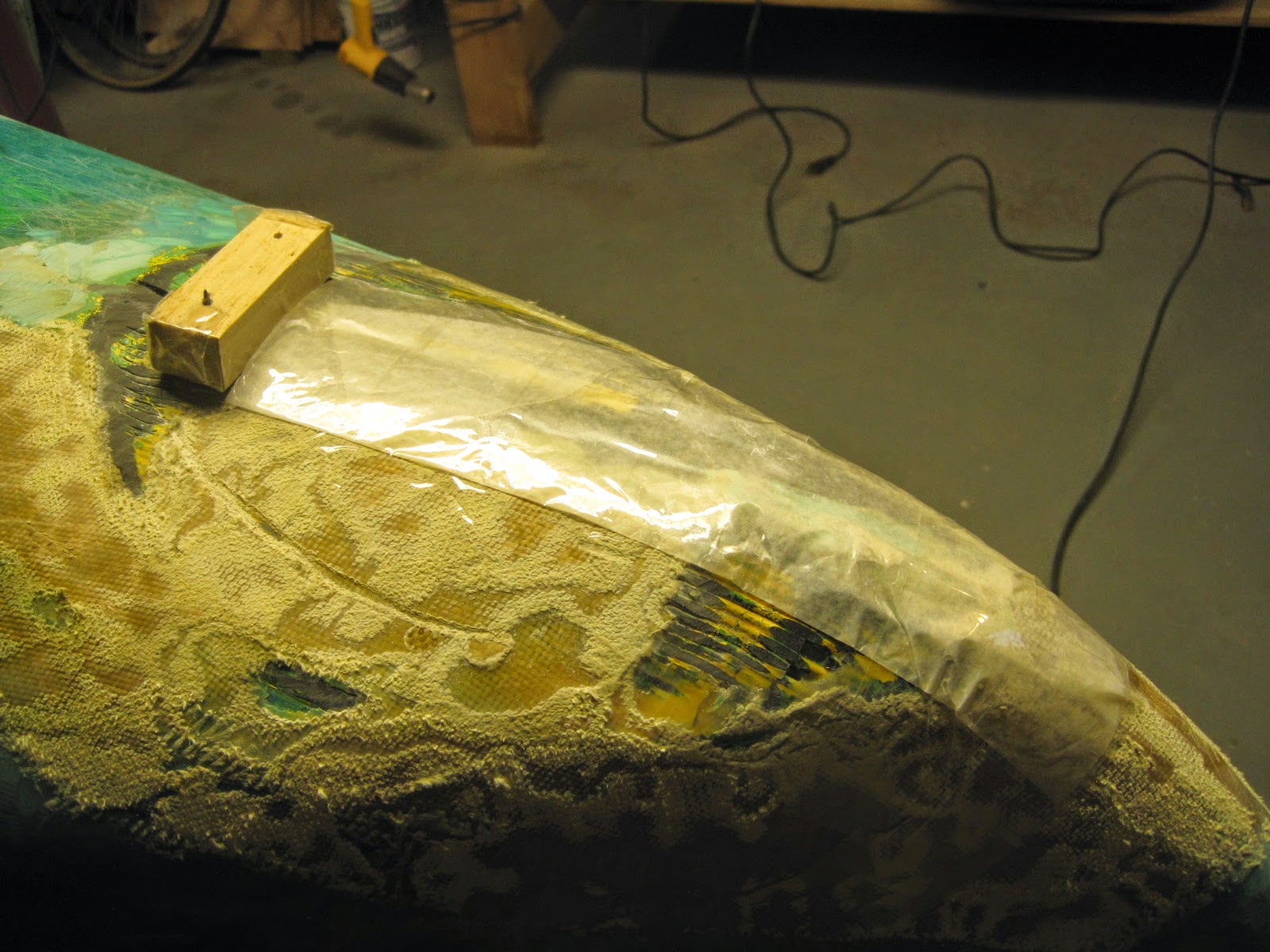I spoke too soon in my previous post when I said that I was finished with grinding and other demolition. A closer examination revealed the need for a bit more deconstruction before I'd be able to start patching things back up. This post covers three sessions of work.
Sunday, March 29, 2015
Wednesday, March 25, 2015
Grinding is Finished
I completed the demolition phase of the rebuild today, grinding away all the poorly-adhered kevlar and epoxy on the bottom/outside of the hull.
The two previous grinding sessions were done in the basement, and it created a lot of nasty fluffy kevlar/epoxy dust that could be smelled elsewhere in the house. Today was lovely out, so I brought the sawhorses and boat outdoors and did the grinding there. Much better. Brought the boat back inside for the photos.
I ordered a yard of kevlar cloth and small kits (around 8 oz. each) of two different versions of West System G-Flex epoxy (one filled, one liquid). Having finished exposing all the flaws, I think I'll need more epoxy.
The two previous grinding sessions were done in the basement, and it created a lot of nasty fluffy kevlar/epoxy dust that could be smelled elsewhere in the house. Today was lovely out, so I brought the sawhorses and boat outdoors and did the grinding there. Much better. Brought the boat back inside for the photos.
 |
| Most of the patch is well-adhered to the bottom and remains in place, but a big section had to come off, exposing cracks, caulk and a section of welding. |
 |
| Close-up of the section that was ground down to "bare" or solid material. Utility knife is for scale. |
 |
| I also noticed some hairline cracks in the welded sections along the bilges (right by the point of the blade). These cracks will be opened up a bit with a knife and then filled with epoxy. |
Exposing the Stern Damage
In my second work session on the Probe 12 canoe, I removed the knee pads and the stern deck and ground a lot of the Kevlar/epoxy patching from the sterns interior and exterior.
 |
| Another view of the stern, after the kevlar was removed. |
Monday, March 23, 2015
Diagnosing the Damage
I like things to be inexpensive. I have no desire to show off my means by wearing expensive clothes, driving an expensive car, or using expensive outdoor gear. I favor function over fashion.
As with clothes, cars and gear, so too with boats. I like 'em cheap, and as long as they work, I don't much care what they look like. Since I started paddling solo whitewater open canoe ("OC-1") about two years ago, I've been using a borrowed boat and keeping my eyes open for a really cheap used one.
 |
| Looks pretty fair right-side up. |
So this blog will be a record of bringing a nearly dead Mohawk Probe 12 canoe back to life. This is Day 1.
 |
| The bow is in fair shape. |
 |
| Nicely outfitted too. The pedestal saddle and harness are worth almost what I paid for the boat. |
 |
| Close-up of the bottom midships patch. |
 |
| The stern has a big, ugly patch of kevlar and epoxy. Not a bash plate: just a layer or two of fabric. And it's not well-fastened: it's popped and peeling away from the Royalex in places. |
 |
| Oh oh. The interior at the stern has a sheet of plastic duct-taped in place. Wonder what's under it? |
 |
| So that's what's under the plastic diaper. A single layer of kevlar, very poorly adhered with epoxy. |
 |
| Gorilla Tape sticks incredibly hard. It took a heat gun and a putty knife to get it off the bottom patch. |
 |
| The kevlar patch on the bottom is is bad shape too. Puckered and popped in places. You can see an edge lifting here. |
 |
| Closer look at the white goop just in front of the pedestal. You can see cracks in the Royalex. |
Subscribe to:
Posts (Atom)



















